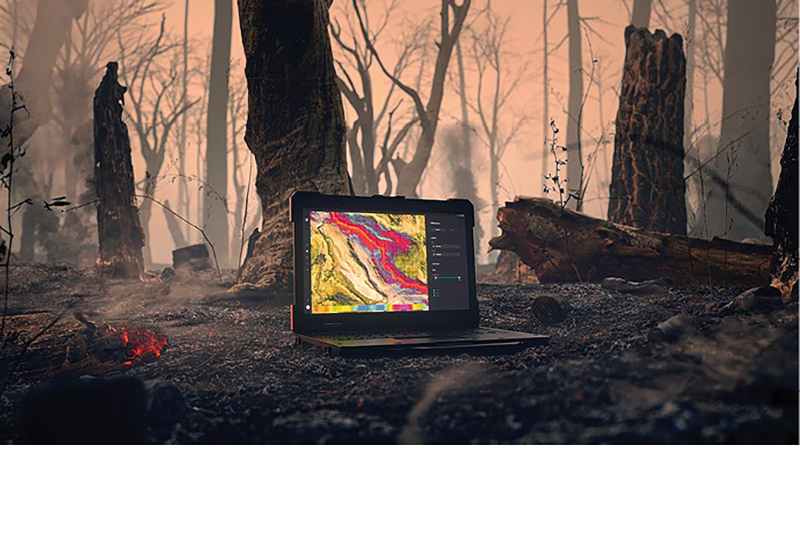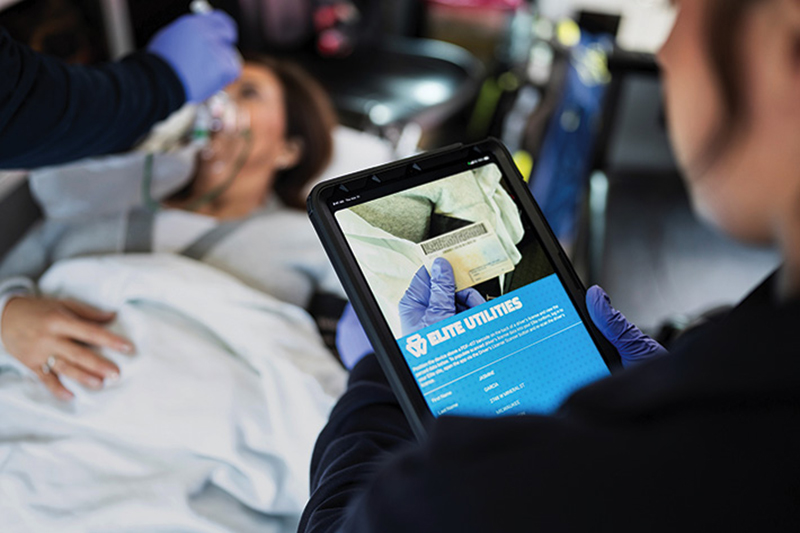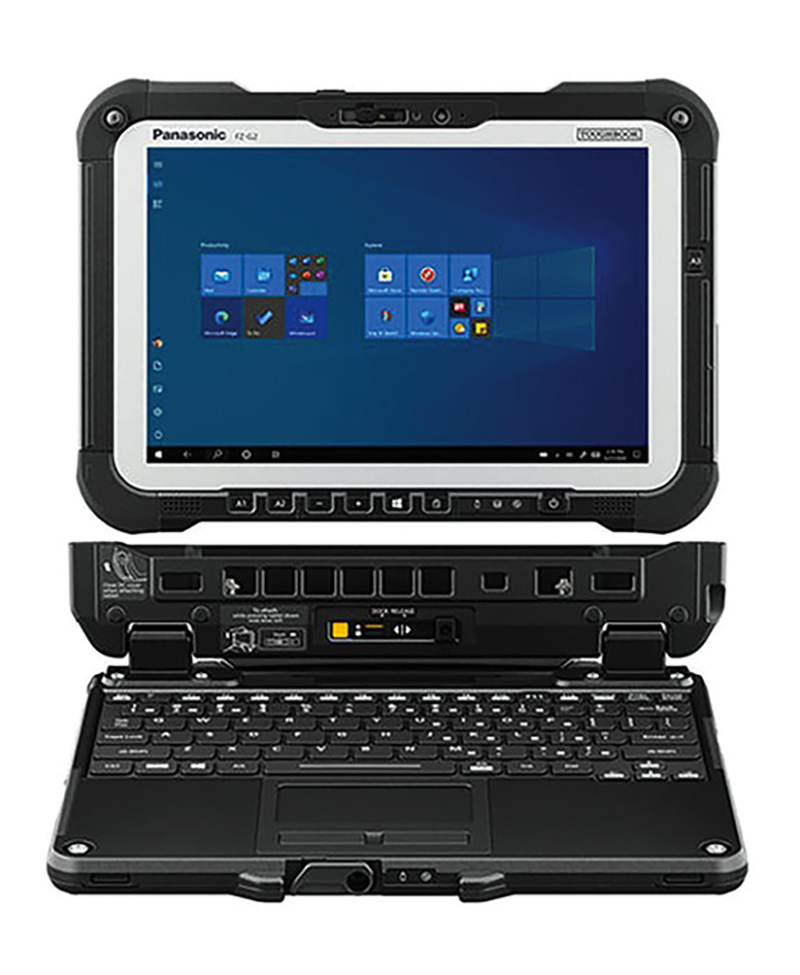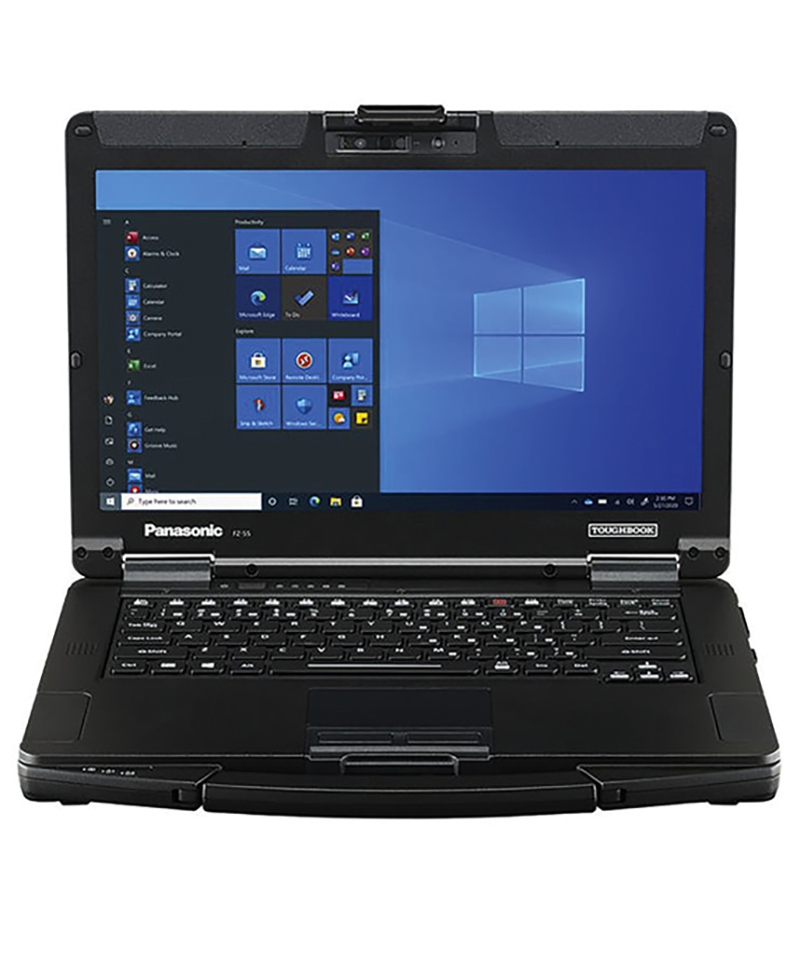
Firefighters and incident commanders are using more rugged laptops, tablets, and hand-held devices both in the cabs of fire apparatus and on the scenes of fires and other emergencies.
Makers of those electronic devices are responding to fire service needs by producing an array of devices that are proving to be durable, easy to use, and full of pertinent data and information.
David Plourde, Dell product marketing rugged manager, points out that firefighters should look at four main attributes in their tablets/laptops for fire use: elements-proof units, readable screens, dedicated GPS, and expanded accessories. “Dell designed and engineered the Rugged Latitude line separate from our standard Latitude,” Plourde says. These include the Dell Latitude 5430 Rugged and the Latitude 7330 Rugged Extreme, which have 11th-generation Intel® Core™ processors with optional vPro, Intel Wi-Fi 6E, and optional 5G capability and battery run time of nearly 25 hours with dual hot swappable batteries.
He notes the Rugged Latitude models are engineered to resist vibration, water, and dust ingress; enhance heat management; and protect from salt fog that can corrode sensitive parts. “We test the Rugged Latitude for operational thermal extremes from -20°F to +145°F and storage thermal extremes from -40°F to +165°F,” he says.

1 Dell makes the Latitude 5430 rugged laptop that uses an 11th-generation Intel Core processor. (Photos 1-2 courtesy of Dell.)

2 Dell’s Latitude 7330 Rugged Extreme laptop is tested for operational thermal extremes from -20°F to +165°F.
Plourde says that when a tablet is mounted on an engine’s doghouse, it gets a lot of vibrations, so Dell builds a dampening material into the unit’s chassis. “It’s a magnesium alloy made with high-strength plastics and carbon fiber into an extremely rigid hard case with dampening material on the inside,” he says. “We also do (military specification) testing of 26 drops from a six-foot height on the corners, sides, and faces of our Rugged Latitude laptop models. For our semi-rugged version, we do the drops from a height of three feet, while our Rugged Tablet, which has no integrated keyboard, drops from four feet high.”
Dell’s touch screens are very bright, Plourde says, going up to 1,400 nits brightness rating and as low as three nits for dimly lit conditions. “All of our touch screens are glove capable,” he adds. Plourde says that Dell sees more laptops installed in engines and ladders, while tablets are more in use on rescues and emergency medical services vehicles. “With the tablet, they want to hand-hold it easily,” he says. “Plus, we have a pens screen feature for signatures and touch boxes, and the user can add a bar code scanner on the back of the tablet for inventory management.”
Daniel Tyk, battalion chief for North Shore (WI) Fire/Rescue, says his department switched over to Apple iPads for their ease of portability, superior connectivity, and ease of customization. “We currently are replacing our seventh-generation iPads with eighth- and ninth-generation units,” Tyk points out. “We run out of five stations and have a total of 27 iPads in the department. All our stations are dual houses, so there’s an engine or truck company at every station, as well as an ambulance or EMS medical unit. Each vehicle has an iPad, and all of them are in OtterBox Defender cases, which are made of a military grade plastic with a silicone rubber bumper and a removable front cover.”

3 North Shore (WI) Fire/Rescue firefighters use Apple iPads for routing, mapping, and asset and fleet management functions. (Photos 3-4 courtesy of North Shore Fire/Rescue.)

4 A North Shore paramedic uses an Apple iPad to record patient treatment while another paramedic tends to the patient.
Tyk says that the administrative functions at the stations use either iPad Air or iPad Pro models, and some stations also have an iPad that is used for fitness and training purposes. “We are using ImageTrend software for EMS reporting and Operative IQ for asset and fleet management,” he points out. “We recently implemented First Due, a preplan module that uses Google Maps, which allows us to drop on overlays. Our crews use it for mapping and can log en route on the iPad and send data about the route and map back to our CAD (computer aided dispatch) system.”
Chris Ingram, a captain at the Santa Clara County (CA) Fire Department, says Santa Clara County has used Apple computers since the 1980s. “Cupertino, where Apple has its headquarters, is in our fire district, and we’ve used Apple computers on desks for a long time, most recently the iMac models,” Ingram says. “In 2014, we transitioned from the Panasonic Toughbook to the standard 10-inch screen Apple iPad in our rigs and use Marvlis, a routing and two-way communication software, with our CAD. It’s capable of having our custom GIS base map on at all times, has status buttons with tabs, and can switch back and forth between the map and CAD notes. It also can take our custom data and can edit routing data.”
Santa Clara County has 15 stations staffed by 19 companies daily with a total of 230 firefighter/EMTs/paramedics. Ingram says the department has iPads in 45 apparatus and that the devices use software that keeps the display on 24/7. “The units are constantly on the charger, and it’s impressive that with the heavy use that they get, they are giving us up to four years of use,” he says.
“Every rig has two iPads,” Ingram points out. “The captain has one for routing, and the second iPad is mounted in the back and used for electronic patient care. It goes in and out of the rig all the time.” Ingram adds that each iPad has an iPort induction case and charger.

5 A Santa Clara County (CA) Fire Department captain checks out a route map on an Apple iPad mounted in an engine. (Photos 5-6 courtesy of Santa Clara County Fire Department.)

6 Each Santa Clara County rig has two iPads: one for the captain for routing and the second in the crew cab for electronic patient care.

7 Panasonic makes the Toughbook G2, a two-in-one detachable tablet with a modular design. (Photos 7-8 courtesy of Panasonic.)

8 Panasonic’s Toughbook 55 is a 14-inch semi-rugged laptop with a modular design.
“In the near future, we will do business inspections using the iPads as well as wildland inspections for clearing brush using our Esri Field Map software that connects to our GIS data like Marvlis does,” he says. “We’ll also use iPads for hydrant inspections and will do preplanning on them as well.”
Ingram says the department currently is using the Intterra web application connected to its CAD and record management system on the iPads as well as an automatic vehicle locator system that provides a map of where all vehicles are located. “They can integrate our various GIS layers of city and fire district boundaries, live mark current incidents on the map, and tap into information from fire data both statewide and nationally for a seamless integration of data onto the iPad,” he adds.
Panasonic makes several Toughbook® models, including its Toughbook G2, a two-in-one detachable tablet with a modular design and user-removable expansion packs; the S1, a rugged Android™ tablet supported by Android’s productivity+; the 55, a 14-inch semi-rugged laptop with a modular design; and the N1T tactical, a slim and rugged 4.7-inch handheld unit.
ALAN M. PETRILLO is a Tucson, Arizona-based journalist, the author of three novels and five nonfiction books, and a member of the Fire Apparatus & Emergency Equipment Editorial Advisory Board. He served 22 years with the Verdoy (NY) Fire Department, including in the position of chief.

